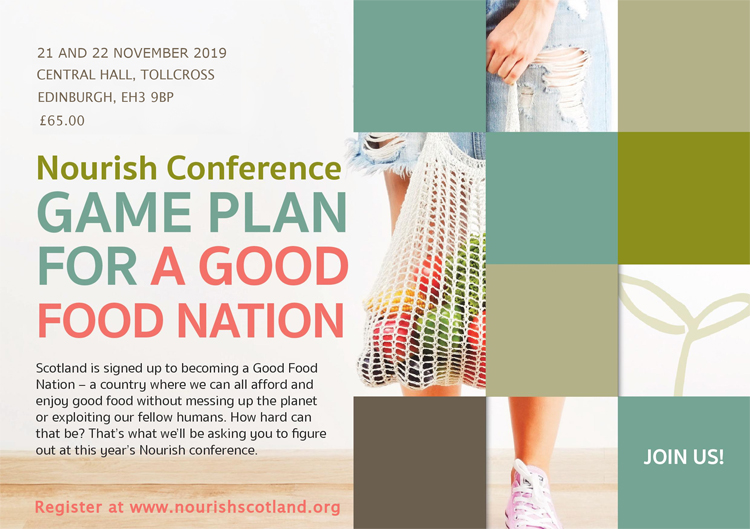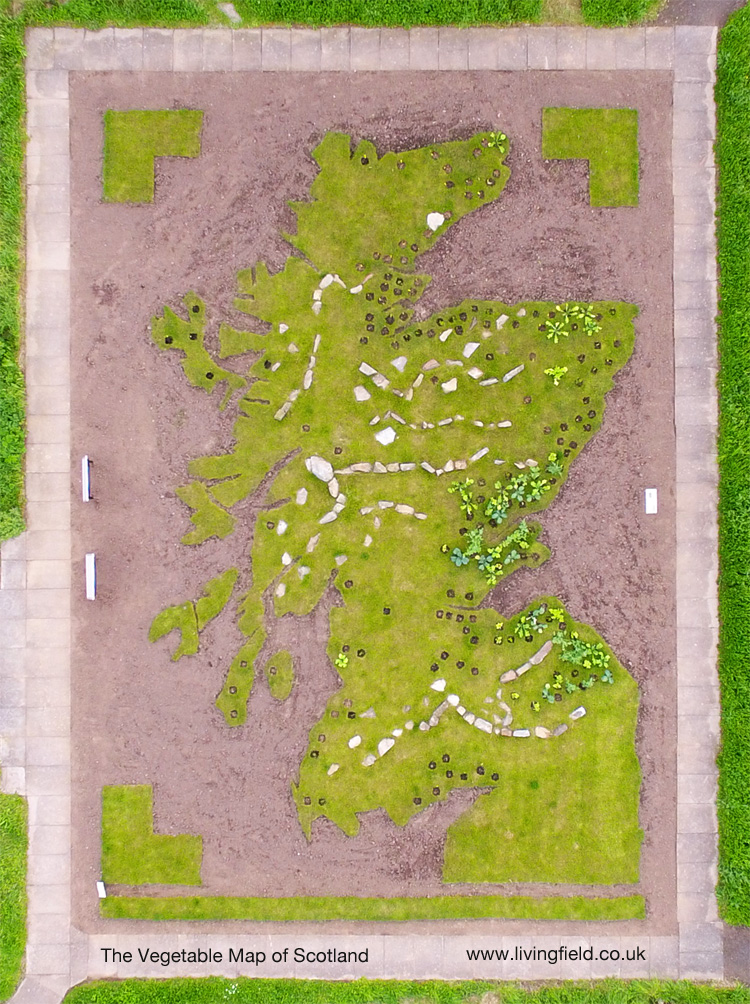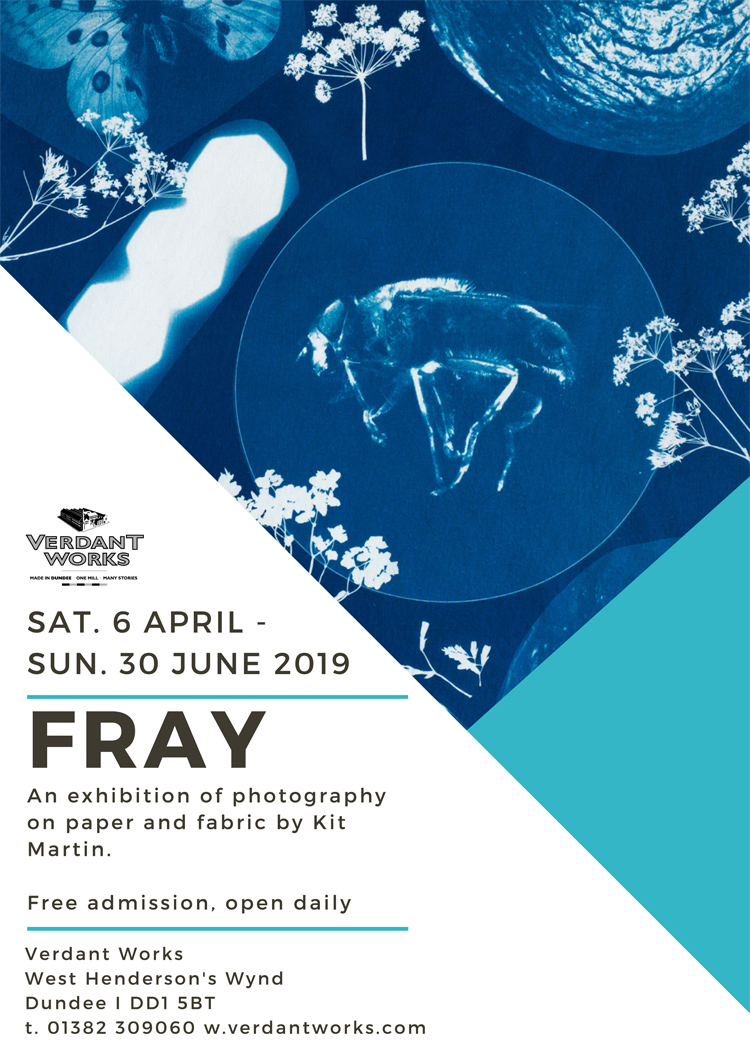IN CASE YOU MISSED IT – THE LOST WORDS
The Lost Words by Robert Macfarlane and Jackie Morris is evolving into quite some project. The original book was written and illustrated to draw attention to the loss from common usage among children of words like acorn and wren and to help make the words live again. There are also teaching guides sponsored by the John Muir Trust and a 2019 BBC Prom and related album performed by Trad singers and players. See for yourselves –
- The book. The Lost Words by R Macfarlane and J Morris. 2017. Hamish Hamilton.
- The Penguin Books web site. The making of a modern spell-book.
- John Muir Trust. An explorer’s guide to the Lost Words by Eva John (teaching aid, etc.)
- Spell Songs. An ensemble – Karine Polwart, Julie Fowlie, Sekou Keita, Kris Drever, Kerry Andrew, Rachel Newton, Beth Porter, Jim Molyneux. Album available see The Lost Words Spell Songs.
GOOD FOOD NATION?
Not yet, many will say. But there is hope. Later this year, the Nourish Conference, 21 and 22 November 2019 in Edinburgh will devise a Game Plan, delegates working together to agree what needs to be done to make the country a Good Food Nation. There’s little else like this – despite all the good intentions and virtue signalling – so the results will be eagerly awaited by the Living Field. Further information at Nourish Conference. See also their Food Atlas published 2018 – probably the most comprehensive and accessible account of where things stand and what needs to be done.
NATIVE SEED RESTORATION MANUAL PUBLISHED – NASSTEC
A new Open Access handbook has been published on the practical use of seeds from native plants for grassland restoration in Europe.
“This month, the EU-Marie-Curie funded project “NASSTEC” (NAtive Seed Science, TEchnology and Conservation Initial Training Network, 2014 – 2017) releases the handbook Native Seed Ecology, Production & Policy – Advancing knowledge and technology in Europe.”
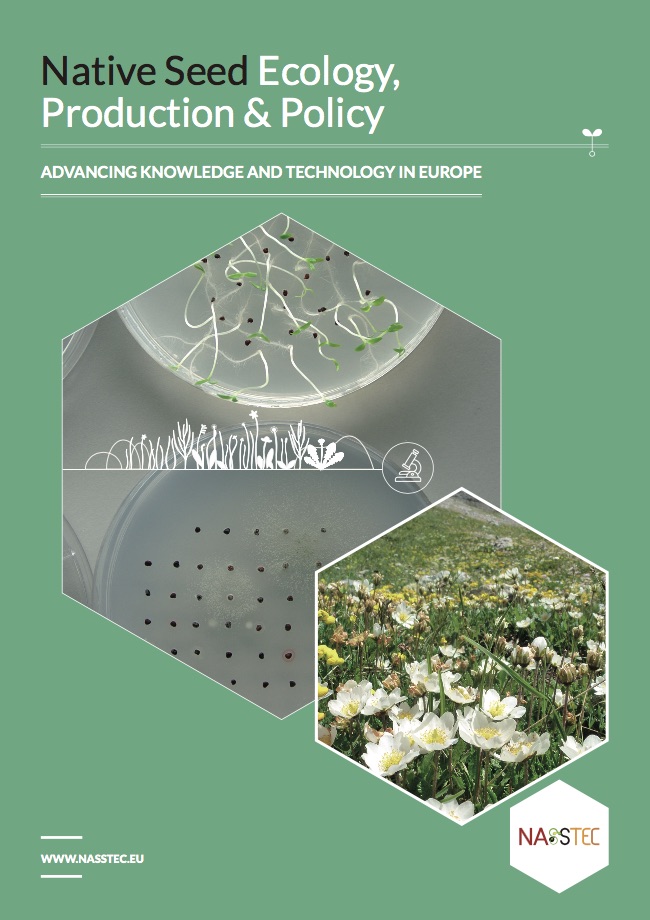
“Delivered by a team of 42 experts from the NASSTEC project and associated partners, the book is the first of its kind and is extensive in its coverage – summarising practical approaches on a wide range of topics from seed handling and germination methods to government policy recommendations for ecological restoration and the native seed industry.”
“Increasingly, the true value of native plants is being recognised, and their seeds deployed to restore and conserve degraded habitats globally. While the native seed industry is relatively young, its ambitions are high and driven by science-insight gained form industry-academia partnerships.”
The Hutton Institute’s Pete Iannetta writes “industry-academic partnerships are especially challenging in many ways. However, the rewards are considerable and especially to repair the damage of ‘old-ways’, and to work with nature to help safe-guard more-sustainable futures”.
The Handbook will be formally launched at the 8th World Conference on Ecological Restoration in Cape Town, South Africa at the end of September and it is freely available on ResearchGate.
GS writes: it is rewarding that our Living Field experience went into the NASSTEC Project. Congratulations to Marcello and colleagues for producing this handbook. [More to follow ….]
VEGETABLES FROM THE AIR
And here is the image of the Vegetable Map of Scotland created by the Living Field and The Farm. Work began in autumn 2018 and was completed in early summer 2019.
It’s hard to tell at first glance that this is a living structure, but yes … this drone image is of grass and rocks shaped to form the outline of mainland Scotland. Vegetables such as potato, carrot, beans, peas and brassicas were then planted where they are most commonly grown. A great idea … well appreciated at Open Farm Sunday and after.
SUMMER 2019 IN THE GARDEN
What a year! What weather! Blizzard at Beltane. Dry heat. Cooling wet. Muggy, humid heat. Drenching rain. The meadow displayed its floral riches early but the heat moved it through its phases too quickly for the bee-plants to last well into the autumn as they usually do. The weeds thrived – the neat medicinals bed got out of hand by August and hairy tare was smothering everywhere. Still, most flowering plants behaved themselves.
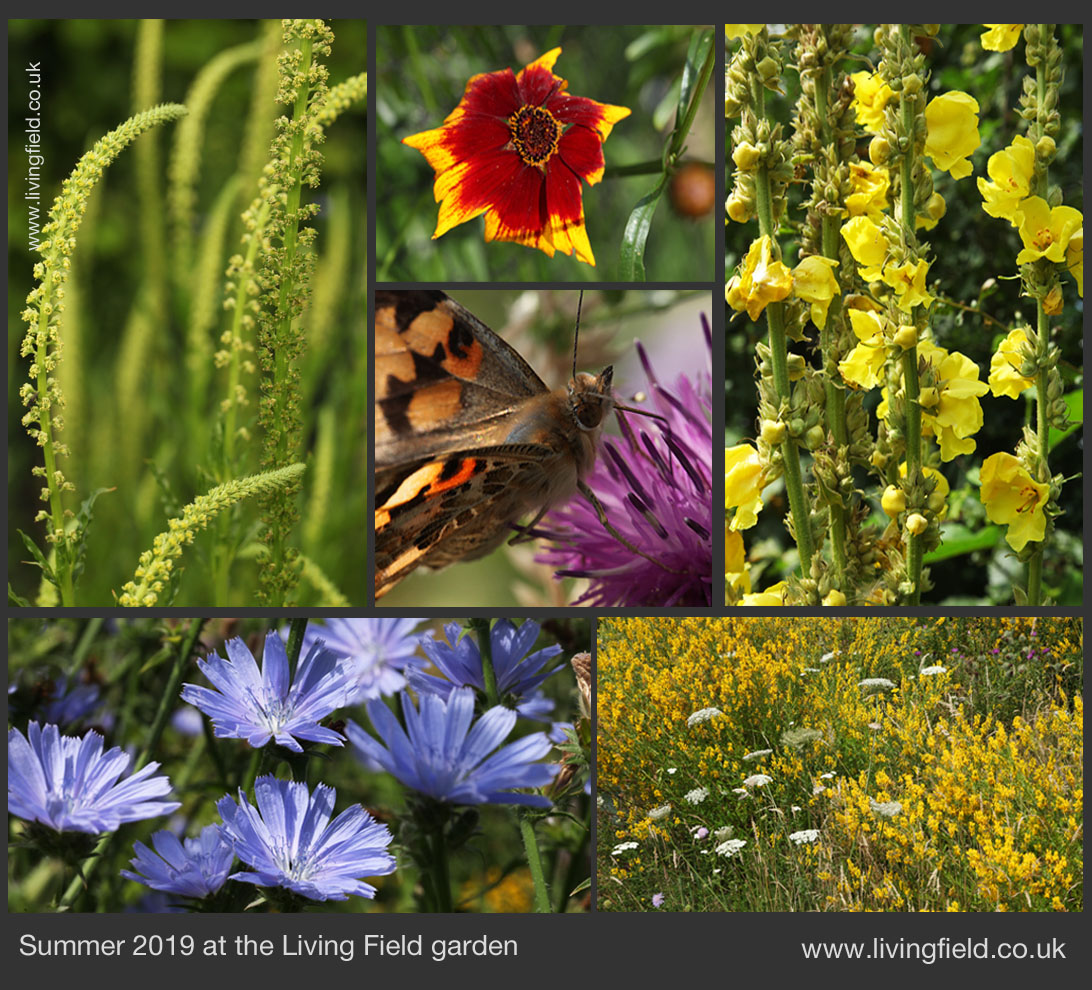
The panel above shows (upper left) flowering stems of weld, grown this year among flax (not shown); single flower of dyer’s coreopsis, sown anew from seed this year; part of a knapweed head with painted lady feeding (centre); mullein in flower at the back of the medicinals bed; the yellow mist of flowering dyer’s greenweed, nitrogen-fixing member of the brooms, the white umbels of wild carrot emerging through it; and the blue of chicory flower heads.
OPEN FARM SUNDAY 9 JUNE 2019
The Living Field garden and cabins were mobbed again at this year’s event. The main exhibit was the Vegetable Map of Scotland created by the Living Field team and The Farm – see Vegetable Map made real, drone images at Garden from the air and Veg posters from Open Farm Sunday. The LEAF Open Farm Sunday main page gives news of the event countrywide. Photographs below were taken on the day.
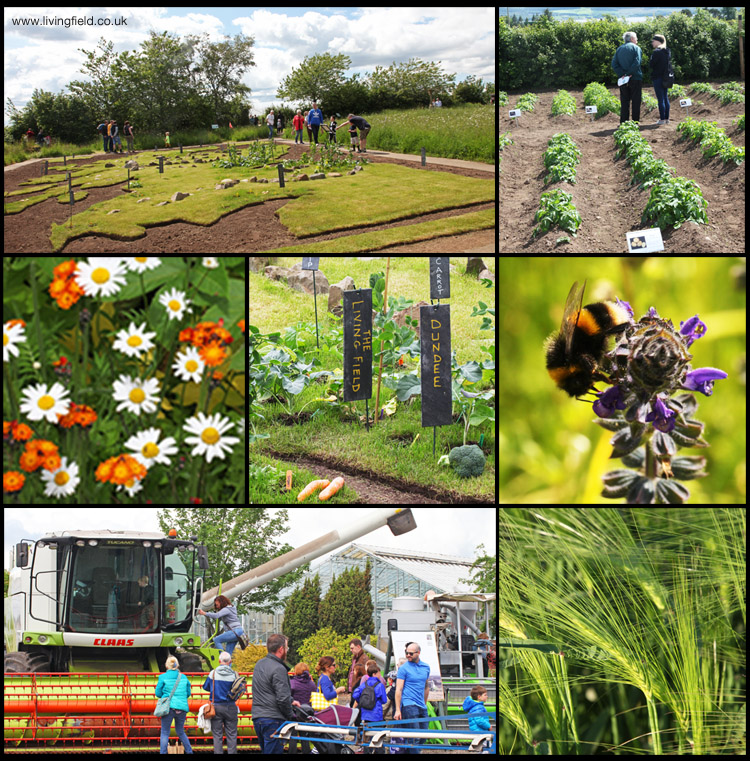
UPDATE FROM DUNDEEASTRO
Dundee Astronomical Society‘s new telescope should be ready for observations later in the year when the night skies darken. In the meantime …
On noctilucent clouds, Ken Kennedy writes (21 May) “we should perhaps see the beginning of the noctilucent cloud season soon as there usually is a report or two by the end of May. With the Sun being so inactive I’m hoping for a good active NLC season and perhaps a few displays with high elevations as there were last year. Observers on the south coast of England reported NLC almost overhead several times and this was confirmed by Cora Randall who analyses the CIPS images of NASA’s AIM satellite.”
On observations of the moon with his 8″ telescope “One of the nights was quite stable and I managed to capture a few of the ‘cracks’ on the Moon’s surface – the Hyginus Rille which is a dogleg volcanic feature and the finer rilles round nearby Triesnecker crater” (see image in left column).
MAY IN THE LIVING FIELD GARDEN
An inconstant year 2019 – never know where you are with it. Cold Beltane (about 5 May) with blizzards in some places. But things started to move later in May.
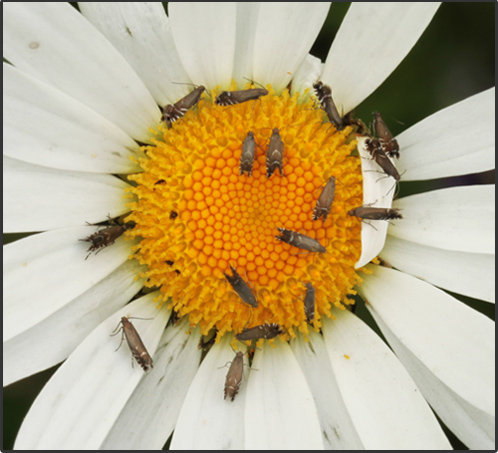
The meadow’s progress reveals three main legumes – red clover, common vetch and the bird’s-foot-trefoils, the latter two well in flower. They’ll be fixing nitrogen – a service to the community! Meadow clary (not much this year) is in full flower and ox-eye daisy just unfolding towards the end of May.
Gladys and helpers have been preparing barley varieties for the Barley Timeline and these are now out in the raised beds. A range of veg is hardening off and ready to be planted on the map of Scotland.
The medicinals and dyes beds lost some old friends over the winter. Two of three cotton thistle rosettes died but there are others on the way for next year. Dye plants weld and coreopsis and the fibre plant flax have been planted and some of the other dyes rearranged. The year moves on.
KIT MARTIN’S FRAY EXHIBITION
An exhibition of photography on paper and fabric – held at Verdant Works Dundee 6 April to 20 June 2019. Kit writes –
Verdant works (Dundee’s Jute Museum) was built on lush meadows, once buzzing with insect life. We have now lost a huge amount of our meadows, throughout Scotland. And the insects that lived in them are in trouble.
The exhibition takes a forensic look at insects and wildflowers using digital and historical photographic processes. This exhibition looks closely with admiration at some of our essential yet diminishing pollinators and the wildflowers on which they feed and by chance, pollinate. Most of the specimens involved are from museum natural history collections.
Printing on fabric and paper, and making use of jute and linen, it includes hand printed cyanotype on textiles, digitally printed textiles, digital photographs on paper and lightbox and hand printed cyanotypes on jute paper.
More …. Cyanotypes by Kit Martin and Restored High Mill at Verdant Works … and see Kit’s upcoming workshops at kitmartinphoto.
COMMUNITY / FOOD / ENVIRONMENT
Here’s a few links to groups working to foster activities between community, environment and food (among other things):
Creative Art Works use their experience in art and design to support and promote workshops, community engagement, education, festivals and events For a start, see their Signs, seeds and woods video on creative-art-works.org.
Scotland the Bread Community Growing from seed to slice: a collaborative project to establish a Scottish flour and bread supply that is healthy, equitable, locally controlled and sustainable. See for yourself at scotlandthebread.org.
The Field A place to grow vegetables, by the community, for the community. “We grow along organic principles and supply the village’. Web site @thefield Dunkeld and Birnam Community Growing.
ORIGINAL LIVING FIELD WEB SITE CLOSED
a
The Living Field was granted some money to build an original web site many years ago. We transferred much of the content across when this new site went live in 2014. Two things were retained – the ‘Living Field CD online’ and the online ASIS seed identification guide. We now bid farewell to both. The web site has closed and visitors will be redirected here (from Feb 2019).
The Living Field CD presented educational material on crops and environment for primary and early secondary education. It was built by a wide range of people including school teachers, pupils and many institute staff, but it has not been possible to keep it up to date. Copies of the CD can still be obtained from gladys.wright@hutton.ac.uk.
ASIS was the product of a collaboration between Living Field staff and students from Abertay University. It proved useful for many years but has since become obsolete.
TINA SCOPA’S NEW EXHIBITION

Tina writes that she has a joint exhibition supported by Fife Cultural Trust at FifeSpace gallery, Rothes Halls, Glenrothes KY7 5NQ from today 19 January 2018 for three months.
She also has two pieces on show at the Mall Galleries in London as part of the FBA Futures Exhibition.
WINTER SOLSTICE 2018
Throughout December, an unpredictable mix of clear days and frosted ground with drear cloud and rain, yet no deep cold so far this winter. The shortest day on 21 December has barely seven hours between the official sunrise and sunset and not much more light. It’s the time of year when the annual temperature cycle lags far behind the solar cycle. But from now the days will lengthen, slowly at first, hardly noticeable until well into January; and while the lengthening days signal the year has turned, the air and soil will continue to get colder, as shown on the solar-temperature curves at Winter solstice.
RECENTLY ON THE WEB SITE
10-year retrospective of the Living Field’s work with cereal grains from seed to crop to harvest to flour to food – including our open days and road shows at Ancient grains at the Living Field – ten years on.
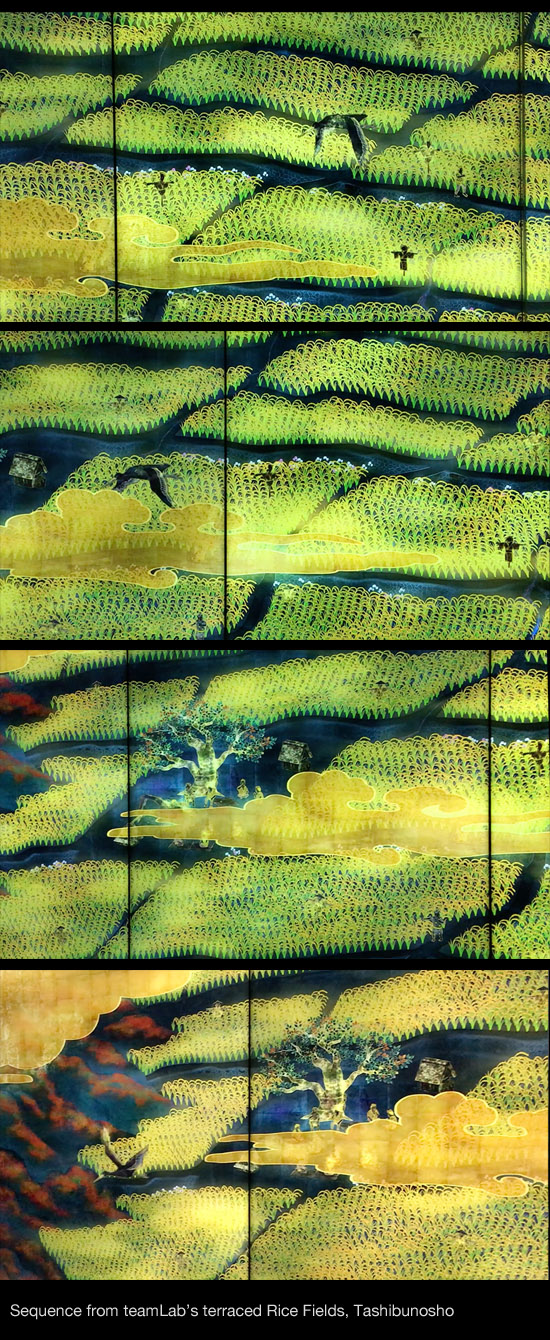
Singapore’s great ArtScience Museum and its interactive displays by teamLab are profiled at Where art meets science: Singapore and Real time virtual field.
The garden pages continue to be undated, the Pond and ditch section recently revised with new blocks of images.
Notes and images on Andy Goldsworthy’s Hutton Rocks sculptures at the National Museum in Edinburgh.
Read about Tina Scopa’s plant pressing workshops at Open Farm Sunday and the Hutton displays at the Highland Show.
A RIGHT MINGER
Minger – the name of a new cheese from Highland Fine Cheeses in Tain. It’s been getting some press coverage in recent days because (in case our international readers are unfamiliar) the term tends to be used as a mild insult, meaning something or someone that smells. Apparently, up-market food outlets are concerned for their customers’ sensibilities. The cheese gets its name from an odorous, orange outer coating. Back down the line, ewes grazing in Caithness and the Black Isle provide the milk. The Times newspaper of 29 October 2018 tells the story. (Is it really smellier than an epoisses that you forgot to put back in the fridge!)
OCTOBER IN THE GARDEN
The astronomers from DundeeAstro have been busy preparing their new telescope. There will be training sessions for members interested in using it over the winter; and next year they are offering a night for Hutton staff. Should good.
Time to begin sorting out the various beds in preparation for next year. But what’s this – a big patch of turf in place of the arable plots ? And someone put big stones among the turf. What’s going on? The plot will become clear after the turning of the year when the winter merges into spring. Wait and see.
SEPTEMBER IN THE GARDEN
Everything was well ahead of its usual timing after this year’s heat and lack of rain. The meadow plants had stopped flowering in August, even the field scabious dried and useless to the bees. The meadow was cut in early September and the hay removed.
The many bees that frequent the garden must have suffered this year. It was rare to see a red-tailed bumble bee at any time. Flowering in the meadow and medicinals bed stretches into October most years, but there is little left apart from the betony and few legumes.
Jean Duncan’s barley timeline has also been harvested. More to follow.
LATE JUNE UPDATE
June 2018 continued the dryness of May. New plants put in the garden had to be watered a few times to get them to survive.
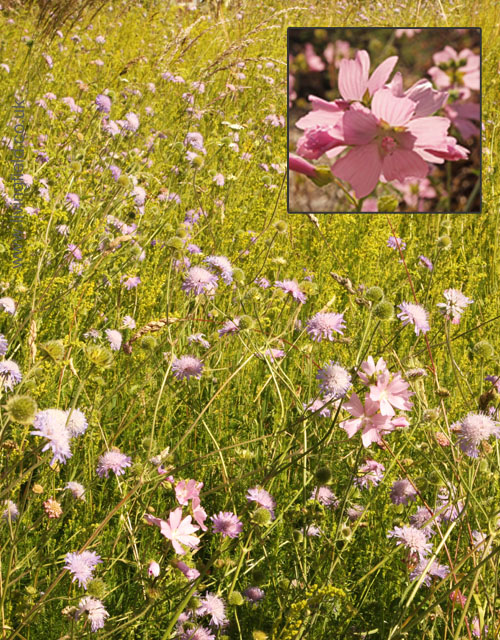
The barley timeline continues to progress – see a time lapse on Twitter.
Visitors have commented on the meadow’s splendour in late June: the ox-eye has receded and the mauve-flowered field scabious, much appreciated by the many bumble bees, is rising above the legumes and lady’s bedstraw.
Our artist friend Tina Scopa held her plant pressing workshop again at Open Farm Sunday, this time at Glensaugh farm near Fettercairn on 10 June. Then she was asked by the Hutton Institute to do the same for a few days at the Royal Highland Show in Edinburgh, where she set up among the RHET displays. A great collaboration developing.
GOINGS ON IN THE GARDEN
The garden’s birds and insects saw some unusual activities in May 2018.
Dundee Astronomical Society completed their ‘shed’ which now houses a more powerful telescope. There will be an opening event later
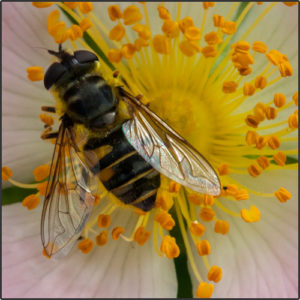
in the year and opportunities for Hutton staff to see the stars. Learn more at their Dundeeastro page on this site.
Jean Duncan has been organising a barley timeline, demonstrating change in varieties since the 1800s. They are behaving themselves (more or less) all in rows. Tracy Dixon from Dundee University (exCECHR) fitted up a couple of time-lapse units to record the changes in barley with the season.
Note there will be NO Open Farm Sunday here this year – the event is moving to the Institute’s Glensaugh upland farm – for details see the Hutton-LEAF web site. Otherwise it’s been unusually hot and dry for May.
LIVING FIELD ON TWITTER
The Living Field has taken to Twitter to help manage and promote its growing role in outreach and education. @TheLivingfield will post updates and progress with what’s going on in and around the Living Field garden. @curvedflatlands will link activities in the Living Field project to current global research and debate on sustainable agriculture and environment. Follow us …..
NEW ON THE WEB SITE
We continue our investigations of the bere line with Bere country, contrasting distributions of bere and barley in the 1854 agricultural census and Grannie Kate returns with more bere recipes at Bere scones.
New images at some of the Garden pages on plants – Cereals, Dye plants, Vegetables. And after a very long and cold winter, here are some photographs in the Living Field Garden in April and early May.
The current Living Field image (top right) is Hutton Rocks! – a slightly processed photograph of one of Andy Goldsworthy’s split and carved sandstone sculptures on the Hutton Roof at the National Museum of Scotland.
EXHIBITIONS MARCH 2018
The Living Field is pleased to work in association with artists and craft workers. Two of our friends have exhibitions current or soon to open.
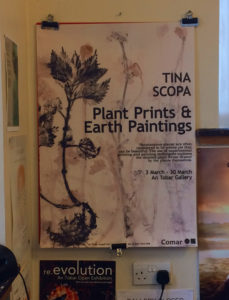
Tina Scopa’s exhibition on Plant Prints and Earth Paintings will run at An Tobar on Mull from 3 to 30 March 2018. Tina works with a range of methods including plants and soil as media for art. Find out more on the Comar web site. See also Tina’s Living Field web page.
Kit Martin is an experimental photographer specialising in plants and insects. Some of her cyanotypes are being shown at the Bones exhibition held at Perth Museum and Art Gallery from 17 March to 24 June 2018. See more at the Culture Perth and Kinross What’s On web pages. We are exhibiting some of her cyanotype images on the Living Field site .
RETHINKING PLANTS: THE SCIENCE BEHIND SUSTAINABLE RESOURCES
“Find out more about the cutting-edge research into plants being carried out at the University of Dundee and the James Hutton Institute. ” A series of sort talks to complement the Beauty and Science of Plant Exhibition (see below). Including talks from Geoff Squire, Pete Iannetta, Ali Karley and Isabelle Colas from the Hutton, and Mark Cutler from the University.
Venue: Baxter Room, Tower Building, University of Dundee DD1 4HN. Date: Tuesday 27 February 17:30 to 18:30. Details: Eventbrite.
DUNDEE’S SWELTERING UNDER TROPICAL HEAT
This is true! The more so in Winter, specially if you’re in Cairns! Coming up on the Living Field web site are a range of articles and images, some you wouldn’t believe, other you always knew were true. In the next few weeks:
Colours of silverweed – plants and animals competing with plastic, eating it, dying through it; the impossibility of removing all of it.
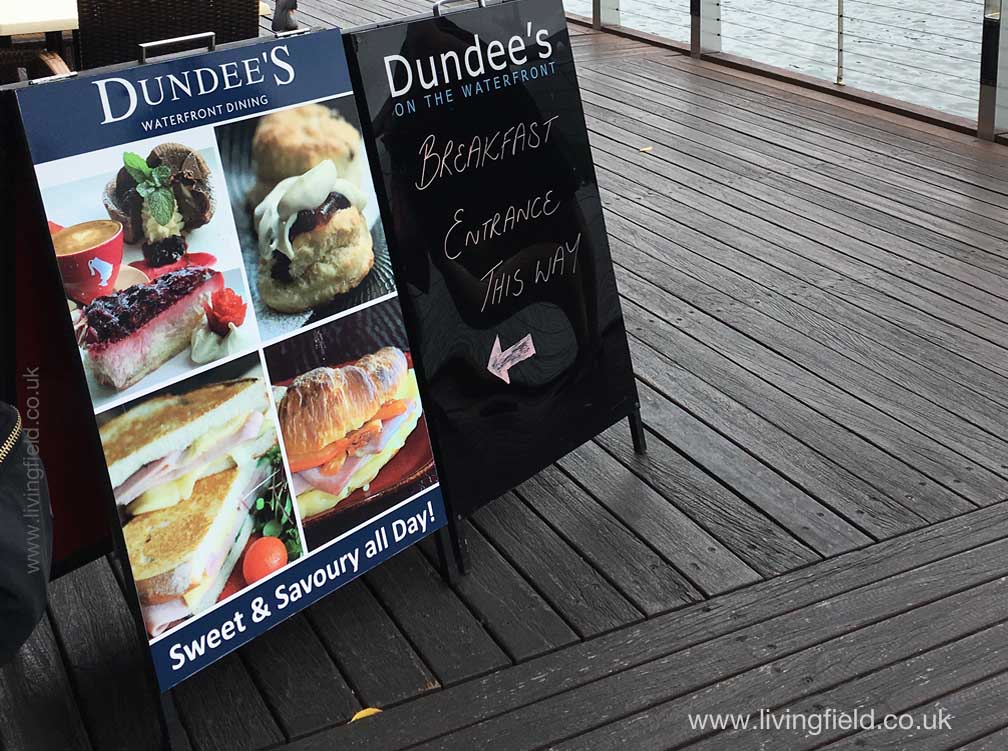 The amazing utility of plants – turning maize cob-husks into art paper and cheroot wrapping.
The amazing utility of plants – turning maize cob-husks into art paper and cheroot wrapping.
All about chestnuts in Portugal, including recipe for chestnut soup.
Open Farm Sunday 2018 preview.
Plans for a Living Field garden exhibit on vegetables in 2018.
And the latest images and customs around the February cross-quarter day.
NEW ON THE WEB SITE
Quick update on new pages and posts.
The famous Beans on Toast project has been given its own space from where you can go to Sarah’s original study ….
Beans on toast – a liquid lunch which looks at the constituents and the water used in making this simple dish, then more on water at 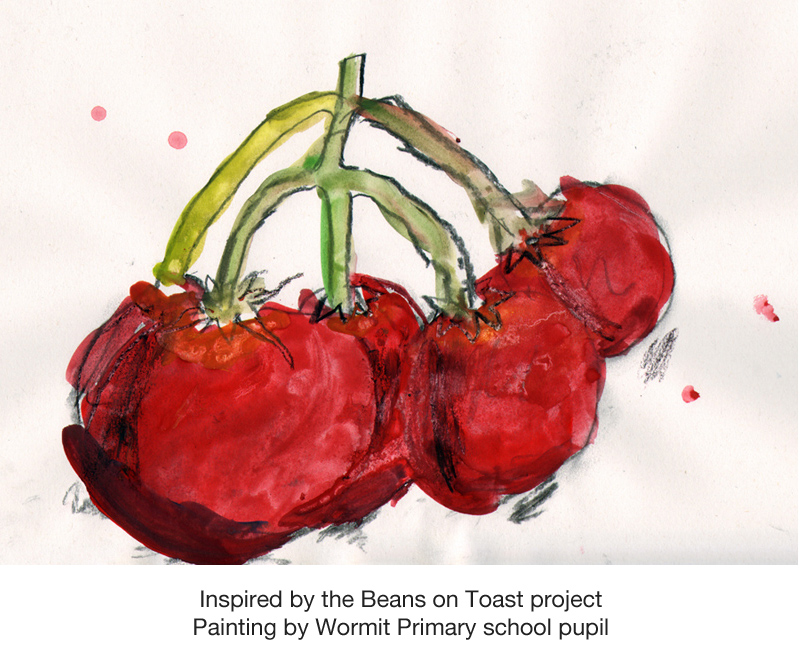
Seed to sewer – the water footprint of a simple meal, which attempts to estimate how much water is needed (a few bathfulls) to grow the crops and process their products just to get them into the tin or package, and finally …..
The art and craft that comes out of the Beans on Toast roadshow and open day exhibit – Where does our food come from?
And though Beans on Toast hogs the show, we also have –
- Paterson’s Curse – the brief story of a borage-family plant that became an invasive weed in Australia
- Bangkok Market – sights and reminiscences of vegetables and fruits in south east Asia
And lastly, some new images from the garden at the Winter Solstice on 21 December 2017.
THE BEAUTY AND SCIENCE OF PLANTS – EXHIBITIONS DUNDEE
Matthew Jarron from the University of Dundee’s Museum Services sends this note on two forthcoming exhibitions. Opening times from this weekend 20 January 2018, Mon-Fri 09.30-19.00, Sat 13.00-17.00.
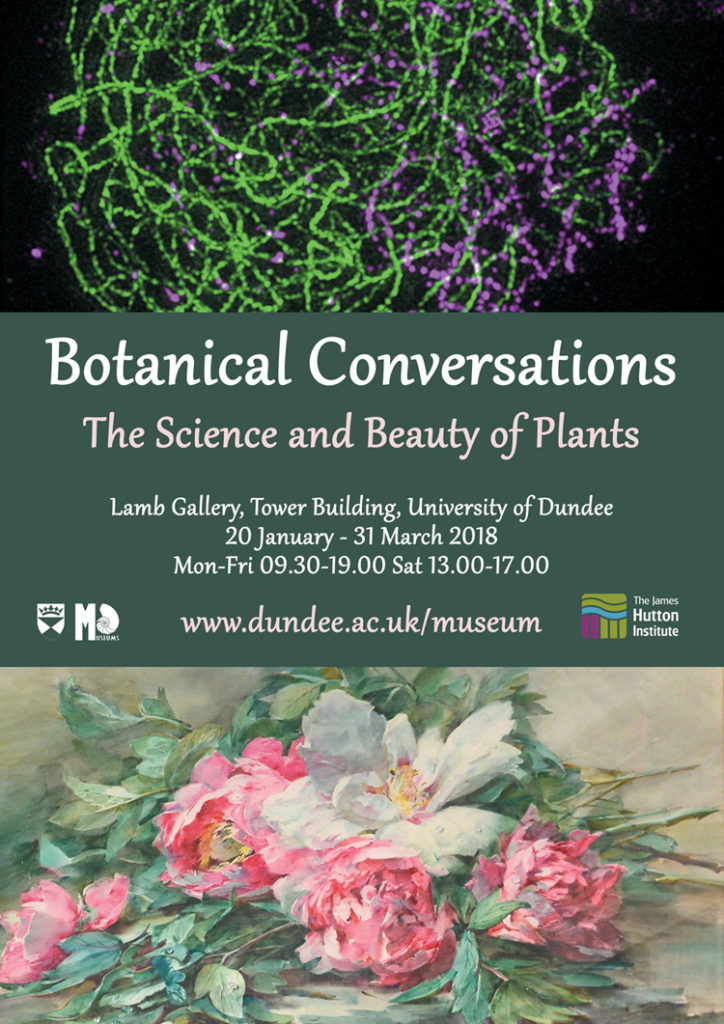
“In the Lamb Gallery, the exhibition Botanical Conversations features highlights from the University’s amazing Herbarium collection, stunning botanical teaching charts and beautiful works of art inspired by plants. It describes the history of botany teaching at the University and also showcases some fascinating projects being carried out both here and at the James Hutton Institute.” Exhibits also include the Citizen science GROW Laboratory at DJCAD, The Beauty of Roots exhibition, and the poetry of Heather Yeung. Runs until 31 March 2018.
“Meanwhile, in the Tower Foyer Gallery, Exploring our own Backyard has been put together by the University of Dundee Botanic Garden and highlights the current project to revamp the Garden’s native plants area. This is the jewel in the Garden’s crown and is still unusual in botanic gardens, which traditionally showed little interest in their natives. Dundee’s garden is young, founded in 1971, and it was committed from the start to telling the story of Scottish plants and their ecology. Runs to 17 March 2017.
VEG ON THE EDGE
The Living Field is pleased to post an article by Transition Turriefield on their experiences with growing vegetables as part of a community project at a latitude of 60 North. Long days in summer mean a good solar income, but temperature and soil condition impose severe limitations to plant growth. To have grown and sold such a range of produce this far north is a major achievement.
We sometimes think we have problems in the Living Field garden at 56 North, but here the soil is deep-ish with a rarely limiting water-holding capacity and not too much organic content. You have to applaud the Turriefield team for persevering against the odds. An example to all doubters! See their account at Transition Turriefield.
NEW ON THE WEB SITE
In addition to Transition Turriefield (above), new posts and pages in and around October and November 2017 include:
- Can we grow more vegetables? ….. including a map of vegetable and pulse crops in Scotland prepared as part an ongoing collaboration with Nourish Scotland for the Vegetable Summit (see below).
- The Watermill at Blair Atholl – where are the corn fields today?
- Old barley varieties and landraces …. addition to the garden/cereals page with images and notes on a range of barley landraces and old varieties, including Spratt described by Lawson and Son in the 1850s.
- Update from Jean Duncan with new root art.
- New images from the Garden at the autumn equinox.
VEGETABLE SUMMIT EDINBURGH
Tuesday 24th October 2017 from 09:45 to 16:30 at the Royal Botanic Garden Edinburgh
Nourish Scotland sent us the following notes and link. On 24th October 2017 London, Edinburgh, and Cardiff will host Vegetable Summits where wholesalers, retailers, restaurateurs, caterers, government representatives and manufacturers will be making a pledge for more veg.

We should be eating about 3.5 portions of veg a day, but most of us fall short by one portion and many of us, including children, are eating hardly any veg at all. Yet, 79% of UK adults want to be eating more veg in their diet. Our environment makes it difficult to eat well: from aggressive junk food advertising, to limited availability of veg in convenience stores and high prices, to lack of cooking skills.
We will be hearing about the barriers to veg consumption from each sector, and from the trailblazers demonstrating great leadership in this area. We will see bold action as organisations pledge to do their bit to increase veg throughout the food system.
We invite food businesses – from production to retail – to attend to discuss how collaborative action can make veg the easy choice. For the programme and eventbright booking link, see http://www.nourishscotland.org/projects/peas-please
NEWS AND UPDATES LATE SEPTEMBER 2017
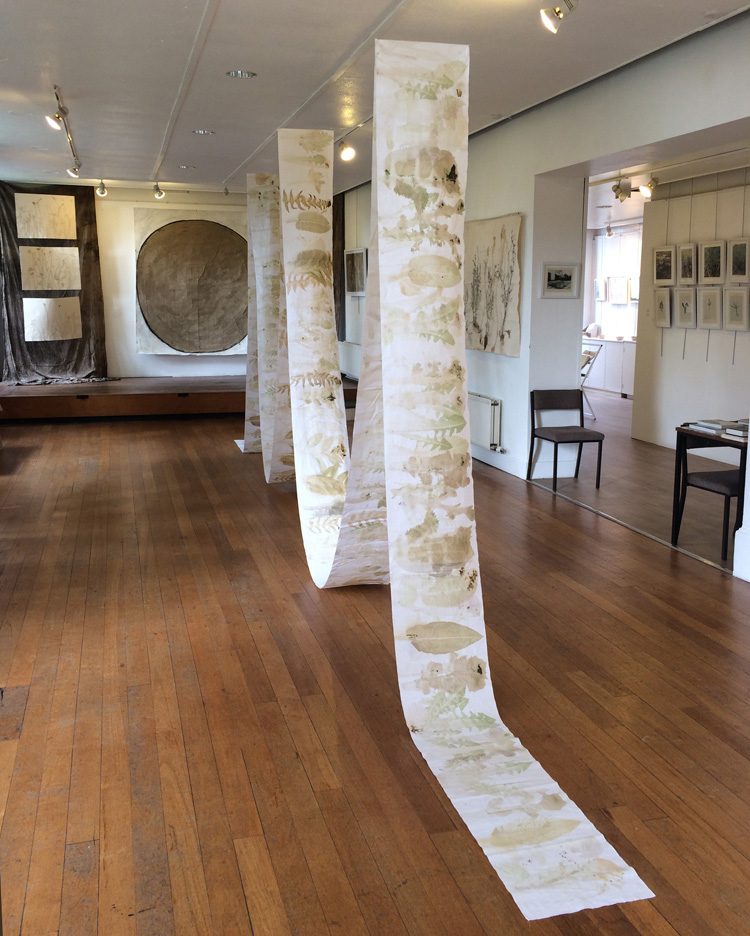
Tina Scopa’s art exhibition at the Roseangle Gallery, Dundee in August is shown in some images provided by the artist – right, and more at Tina’s web page on the Living Field.
The Food Life in Angus is a collective that aims to reconnect local people and with local food. They have organised a range of events over the coming weeks and months. Looks great. For details see the eventbrite page.
The Carse of Gowrie Sustainability Group has organised a Patrick Matthew Festival Weekend in the Carse between Dundee and Perth. The opening event is at the Inchture Hotel, Inchture on Friday 29 September 2017. Other events follow: check the twitter page on Patrick Matthew. There is also a PM trail planned along the Carse. The wikipedia entry gives more on his life and contribution.
DUNDEE ASTRONOMICAL SOCIETY NEW OBSERVATORY
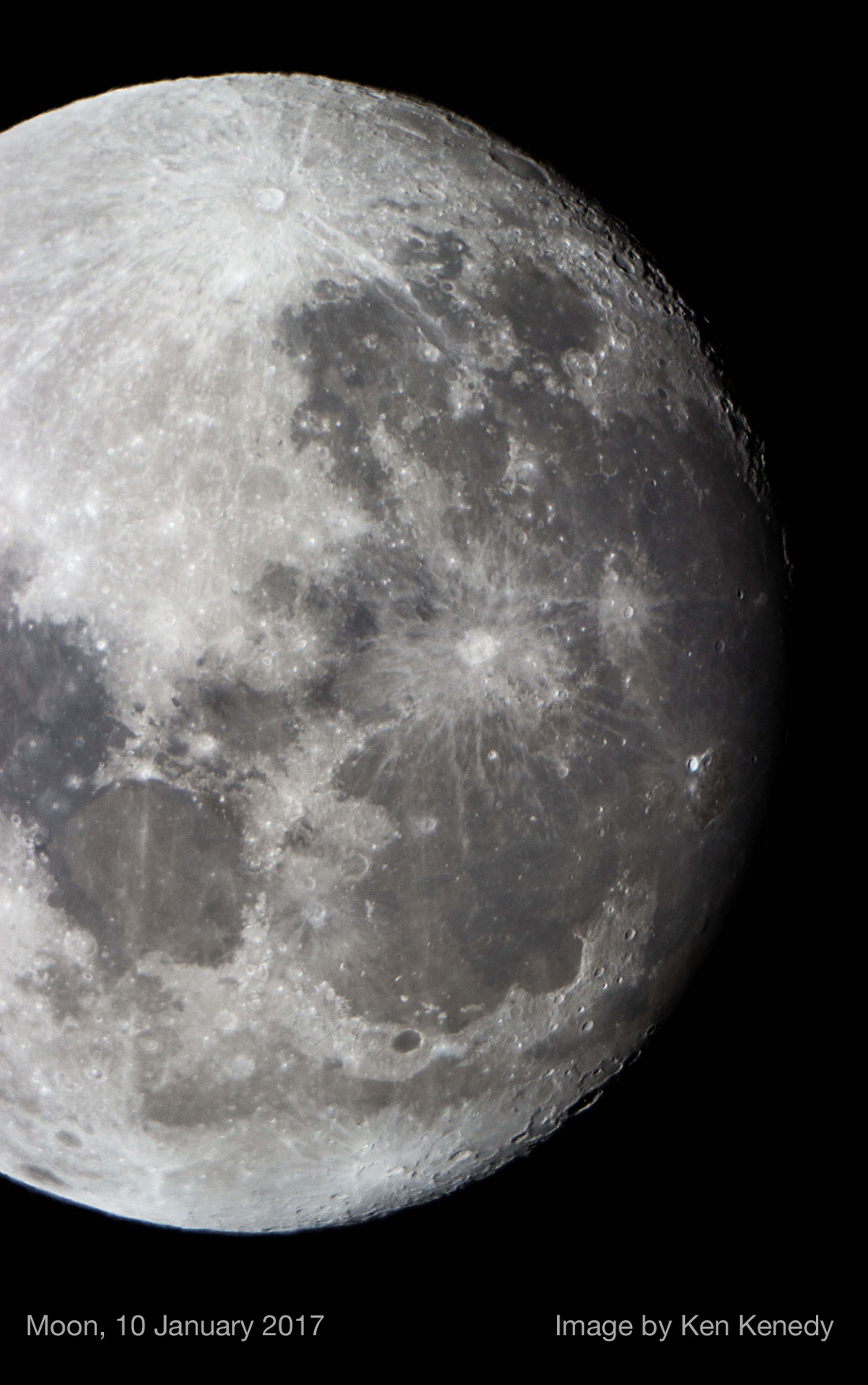
The structure covering Dundee Astronomical Society‘s telescope in the Living Field garden was damaged some time ago in a storm. After some planning and discussion with the Living Field team, and with the blessing of the Institute, the astronomers are now in the process of making a new cover to be installed later this year.
In preparation, Ken Kennedy and friends will be dismantling the existing cover and removing the telescope for safe keeping until the new structure is in place [11 September 2017].
Update 26 Sep: The old telescope dome is now ‘off’ and disposed of (thanks to Gladys Wright and Jim Wilde for arranging the mini-skip). A strange looking stump, shielded in plastic, sticks out of the concrete pad’ and we are told the construction of the new ‘shed’ is moving apace. [Ed: can’t wait to see it!]
NEW ON THE WEB SITE
- Vegetables in the Garden – updated page with many new photographs of this year’s vegetables and herbs.
- Labours of the Months – medieval wall paintings at St Agatha’s Church, Easby, Yorkshire: a contribution to the Living Field pages on The Year.
- Bere battered – another bere-meal recipe from Grannie Kate
- ScoFu: the quest for an indigenous Scottish tofu – article by Chantel Davies on making tofu from locally grown beans.
TINA SCOPA ART EXHIBITION AND WORKSHOPS
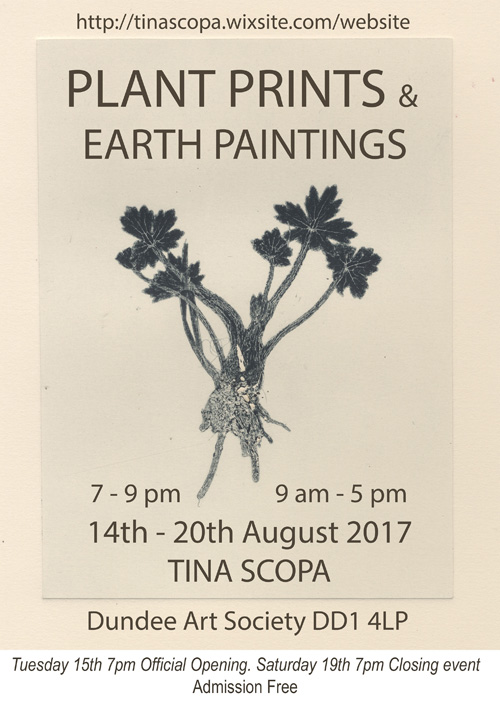
Visitors will be aware of Tina Scopa’s recent work with the Living Field, including her well attended workshop in the Garden and her article with images of her Edaphic Plant Art.
She has since been preparing an exhibition at Dundee Art Society from 14-20 August (poster right) and has been interviewed by ArtPlantae who published an extended Q&A session about her work on 24 July 2017 under the heading Plants that draw themselves.
Tina has two workshops coming up: 30 July, Sunday at Tayport Community Garden and 13 August, Sunday at Ninewells Community Garden, Dundee.
We will be working with Tina on new projects over the coming months.
NOW IN THE GARDEN
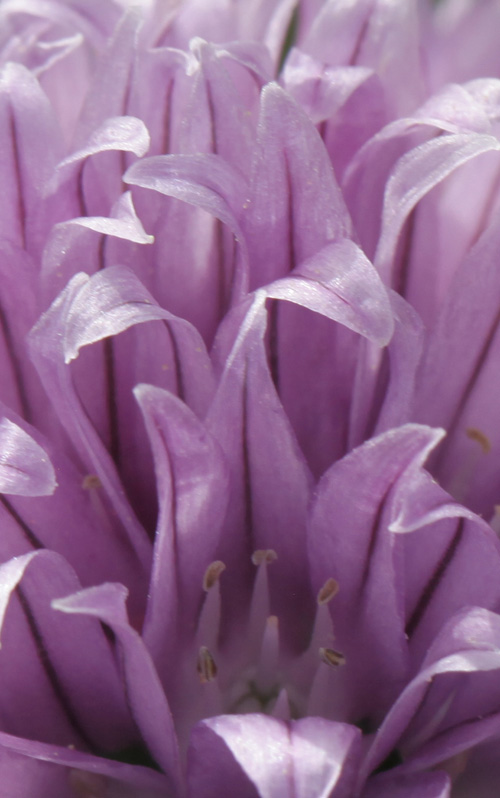
The Living Field Garden in the middle of July 2017.
- Harvesting the vegetables and herbs – peas, kale, lettuce, parsley, courgette – will continue into the autumn
- Cereal ears all maturing, the bere almost there
- Aggressive weeds trying to take over – pulling up the ragwort
- Bees active on a wide range of plants – field scabious (the long lived favourite), greater knapweed, betony and viper’s bugloss (nearly finished); hemp agrimony flowers starting to open.
- Medicinals, dyes and herbs – cutting back the comfrey stalks after flowering, staking up the cotton thistle and chicory, preparing a spot for some honesty seedlings.
OPEN FARM SUNDAY – PRESS AND TV
Over 1000 people visited the site on 11 June. Wet and more wet, with the occasional downpour, but good to see the local community is interested in what is being done here in sustainable agriculture and environment. Some images at The Garden on Open Farm Sunday.
As part of the build up to Open Farm Sunday, to be held 11 June 2017, the Garden featured in an article by Gayle Ritchie in the Courier of 3 June. A PDF version is accessible.
The television programme Landward visited the site on 2 June to film a range of activities that will take place in and around the Garden on Open Farm Sunday. The clips will be aired on BBC One Scotland on Friday 9th June, 7:30 pm, and on BBC Two Scotland on Saturday 10th June, 4:00 pm. (No spoilers, sorry.)
NOW IN THE GARDEN
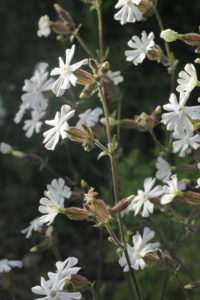
The Living Field Garden at the beginning of June 2017.
- Raised beds in the west garden now filled with a range of vegetables and herbs as part of an outreach project on vitamins and minerals in food.
- Ancient and modern cereals beginning to show their ears – also maize and pumpkins well established.
- Bee plants in flower – field scabious, comfrey and viper’s bugloss.
- Preparations are well under way for Open Farm Sunday on 11 June.
NEW ON THE WEB SITE
- Article by Jean Duncan on Maize paper, showing how to make paper from parts of maize plants grown in the garden.
- Burnt whin – the effect of random bush fires on juniper, a species at risk.
- On the edge – notes on extensive lazy bed field systems and crops grown from 1690s around Eoropie, North Lewis – a link in the Bere line.
- Beauty of Roots exhibition in Dundee by Paula Pongrac, Jean Duncan and friends.
COMING SOON
Open Farm Sunday will be held at the Institute on 11 June 2017. As in previous years, the Living Field garden will be the alive with activities. Check the Hutton Open Farm Sunday page for details nearer the time.
Some rain we hope. The dry spring continued. So dry that some farmers have been irrigating spring-sown crops to get them germinated and putting out leaf and root. Irrigating spring sown crops in Scotland!! A article to follow comparing spring rainfall patterns over the last 1000 years. (See also notes on the Living Field garden.)
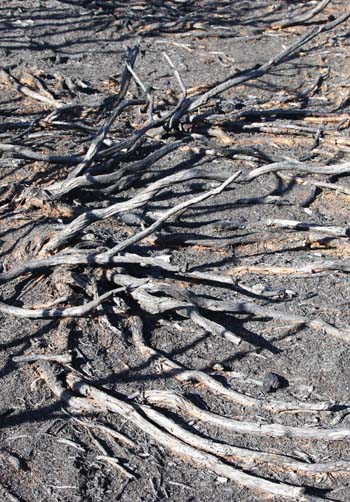
BELTANE
The early May cross-quarter day, usually on the 5th, known as Beltane in some cultures, traditionally meant the crops were sown, the blade was out (the first leaf of the cereals) and farming could expect increasing light and warmth, yet enough water in the soil not to worry about the young plants being droughted.
This year, a dry May followed a dry April. Beltane in 2017 brought more than festival fires. Areas of moorland and scrub were blackened by flame in some areas. The lack of rain was so severe that some spring sown crops were starting to fail, not germinating and not putting up the blade.
The winter crops, wheat and oilseed rape were fine, their roots having extended to depth over the previous months. There have been other dry springs in the last 100 years but only a few as dry as this. More on the May cross-quarter day at XQ2.
DUNDEASTRO
A few updates from our friends at the Dundee Astronomical Society.
- Their observatory at the Living Field garden, damaged some time ago in a storm, will be repaired in the coming months and used again for observing the skies.
- Ken Kennedy has kindly written an article on Noctilucent Clouds for the Living Field web site – see The Phenomenon of Noctilucent Clouds and the full article with images at Clouds on the Summer Horizon.
- Ken has also sent some images of the moon and of several galaxies which we will display over the coming weeks.
- Dundee Astronomical Society will be with us (we hope) at the forthcoming LEAF Open Farm Sunday at the Dundee site on 11 June 2017 – all welcome.
[11 April 2017]
FOOD LIFE SPRING FESTIVAL 26 MARCH

